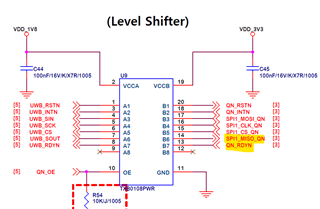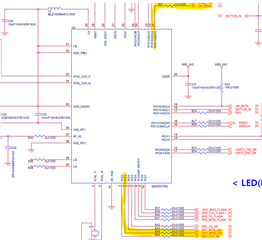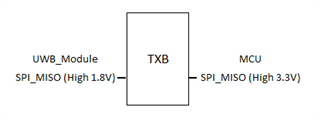Other Parts Discussed in Thread: TXU0304, TXB0104, , TXS0108E, LSF0108
Hello Expert,
Our customer has some issue when they do level shifting of SPI signal w/ TXB0108BPWR.
Issued signals of SPI are MISO (SPI1_MISO_QN), /SS (QN_RDYN) as below schematic.

When these signals are connected to TXB0108BPWR, these signals go to "Low".

But, If we connect SPI signal direct from master to slave after we removed TXB0108BPWR, these signal level is normal "High" for ready.
Could you please check it and give me resolution and your opinion ASAP?
Best regards,
Michael




